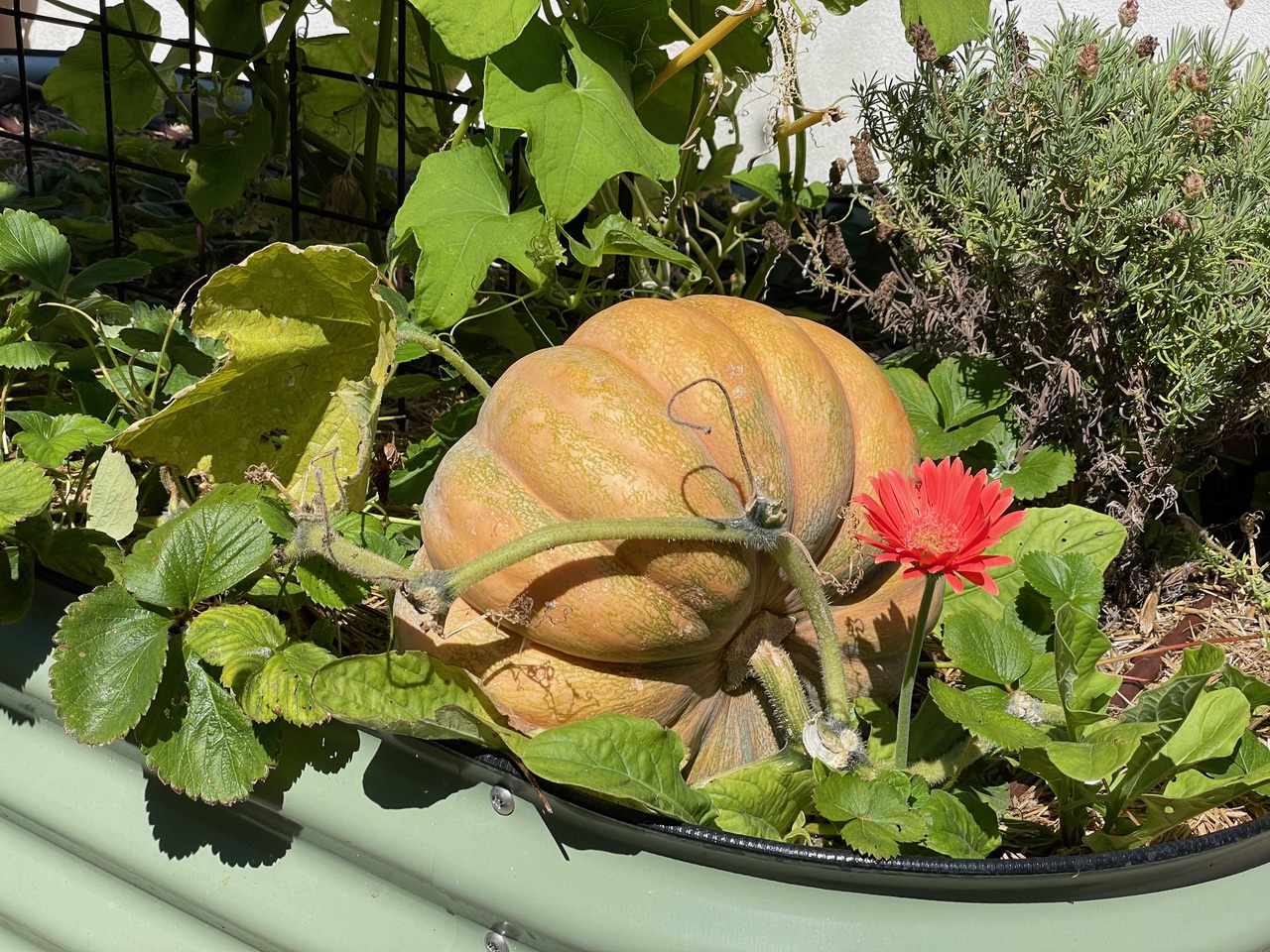While you wait for your vegetable seeds to sprout, you have plenty of time to prepare your planting beds. For vegetables, annual flowers, and herbs, I always advocate for growing them in raised beds rather than in the ground.
In regions like Southern California and the southwest, soils have very little organic matter, water is limited, and summers are hot and dry. In our backyards, growing vegetables in the ground is a big challenge. Growing them in raised beds, on the other hand, allows us to create the ideal conditions meeting vegetable plants’ needs. Extra water is limited to just the soil in the bed – fertilizer too – so it’s not wasted on ornamental plants that are just as happy – or happier – growing dry.
On-ground beds
For decades, I’ve gardened in 22” tall redwood beds that sit on the ground. While I still love my handsome wooden beds, I’ve shifted my allegiance to coated metal beds.

Traditional wood raised beds in my garden
Coated metal beds are essentially light weight frames that also sit on the ground. They are sold as modular kits that each offer multiple configurations, either 17” tall or 32” tall. I prefer the 32” beds, buried a few inches deep for a finished height of about 28.”

Vego Garden beds are coated metal. They come in different heights and configurations.
Before filling beds, gopher-proof them with hardware cloth (aka welded wire mesh). Measure a length about a foot longer and a foot wider than the bed. Press the metal cloth all the way down into the bed from the top so the wire mesh curves up the sides.
Fill the beds with topsoil – I prefer a 40/60 topsoil mix – that is 40% compost and the rest “dirt.” Mix in some worm castings and organic granular vegetable fertilizer, then water it all to settle. The finished level should be about two inches from the top edge of the bed.
DO NOT fill on-ground beds with potting soil, planting soil, planting mix, or bagged raised bed mix that contains peat, perlite, etc. Don’t add leaves or wood or any filler material to the beds; only topsoil from top to bottom.
You might be tempted by horse troughs. I love their rustic look, however I find that horse troughs get way too hot on sunny days. The heat dries out the soil, and the vegetable plants wilt. It’s a recipe for failure.
VegoGarden beds are my favorite on-ground, coated metal beds. They come in several colors and kits for different shapes. I recommend beds that are 4’ wide by 8’ long or longer. Round beds are wonderful for growing blueberries, strawberries, artichokes and other permanent crops.
Free-standing beds
Beds on legs have both advantages and challenges.
On the plus side, custom freestanding beds can be built to easy-to-reach heights for adults or children. Their height puts the beds out of reach for rabbits and other common garden pests can’t get to them.
On the challenging side, freestanding beds are usually shallow which works great for shallow rooted plants like lettuce and basil, but not so good for deep-rooted plants like tomatoes.

Vegepod garden on legs puts vegetables within easy reach and has an onboard watering system in the attached cover.
Vegepod, my favorite free-standing bed is the best of all worlds. It is made of high-density, UV resistant plastic and features a shade cover with a built in irrigation system that also seems to deter pests. The soil depth accommodates all but the largest cherry tomato plants, too.
Topsoil is too heavy and dense for free-standing beds. This is the time to use potting mix combined with worm castings and organic vegetable fertilizer. Buy the best quality potting mix you can find. You get what you pay for when it comes to potting mix, and your garden is only as good as its soil so go for the best.






